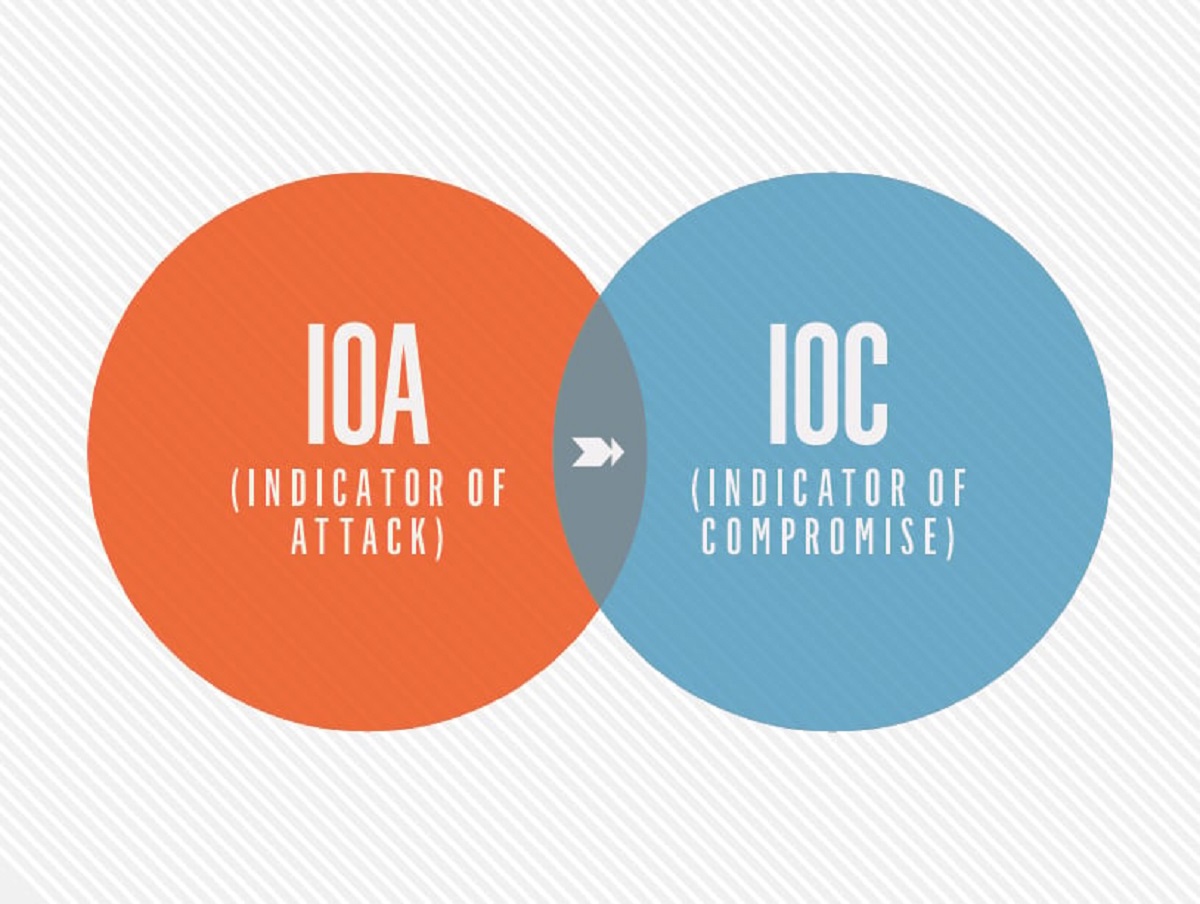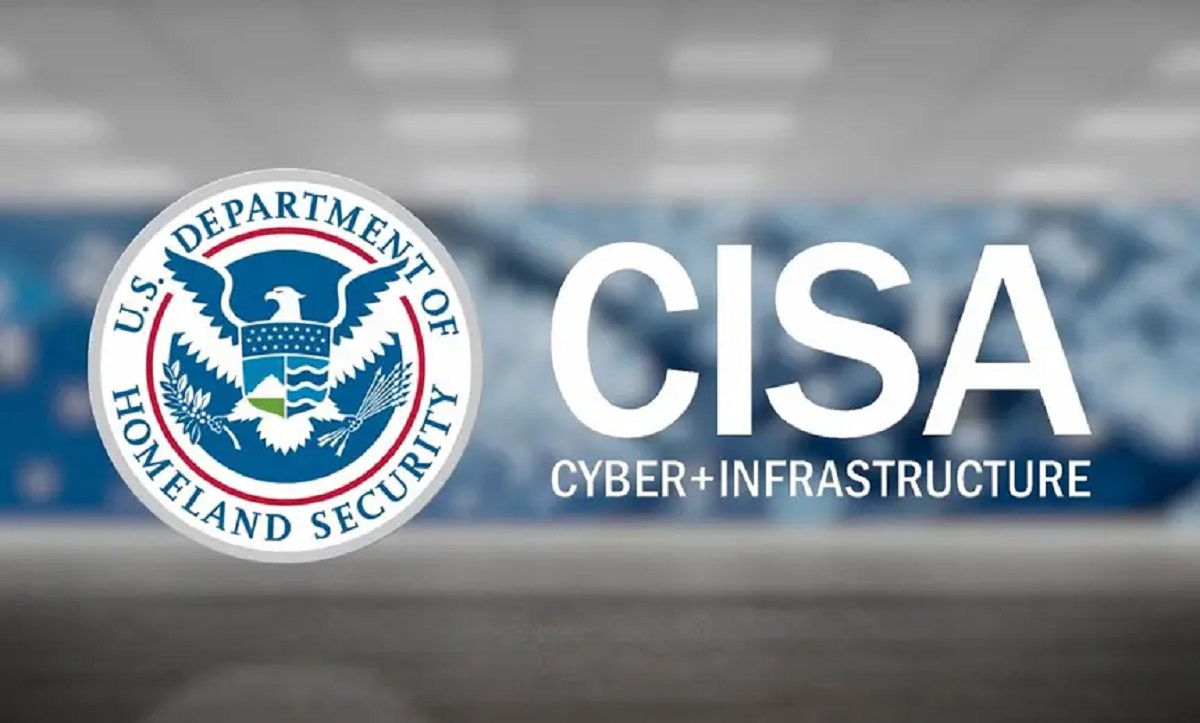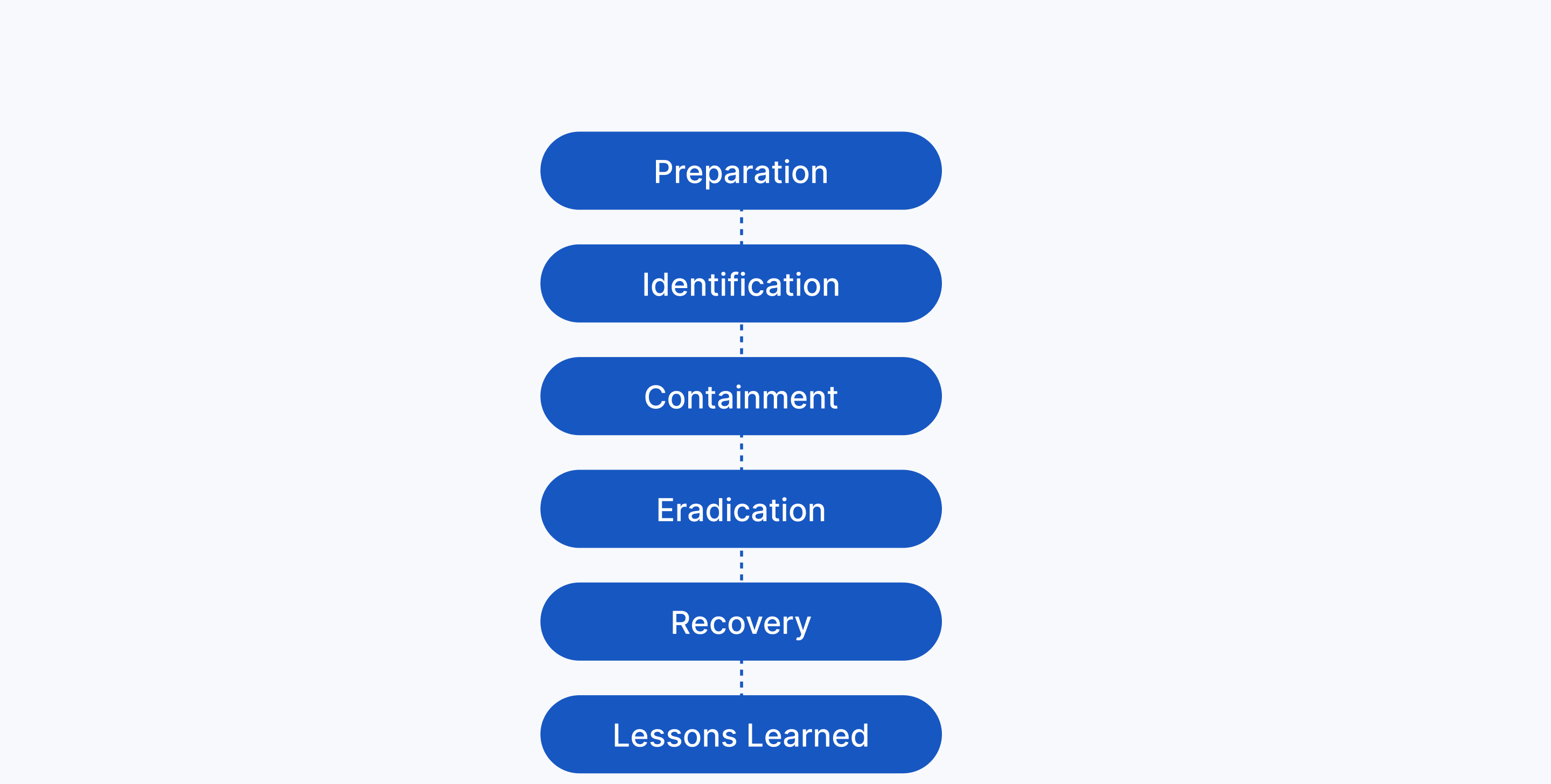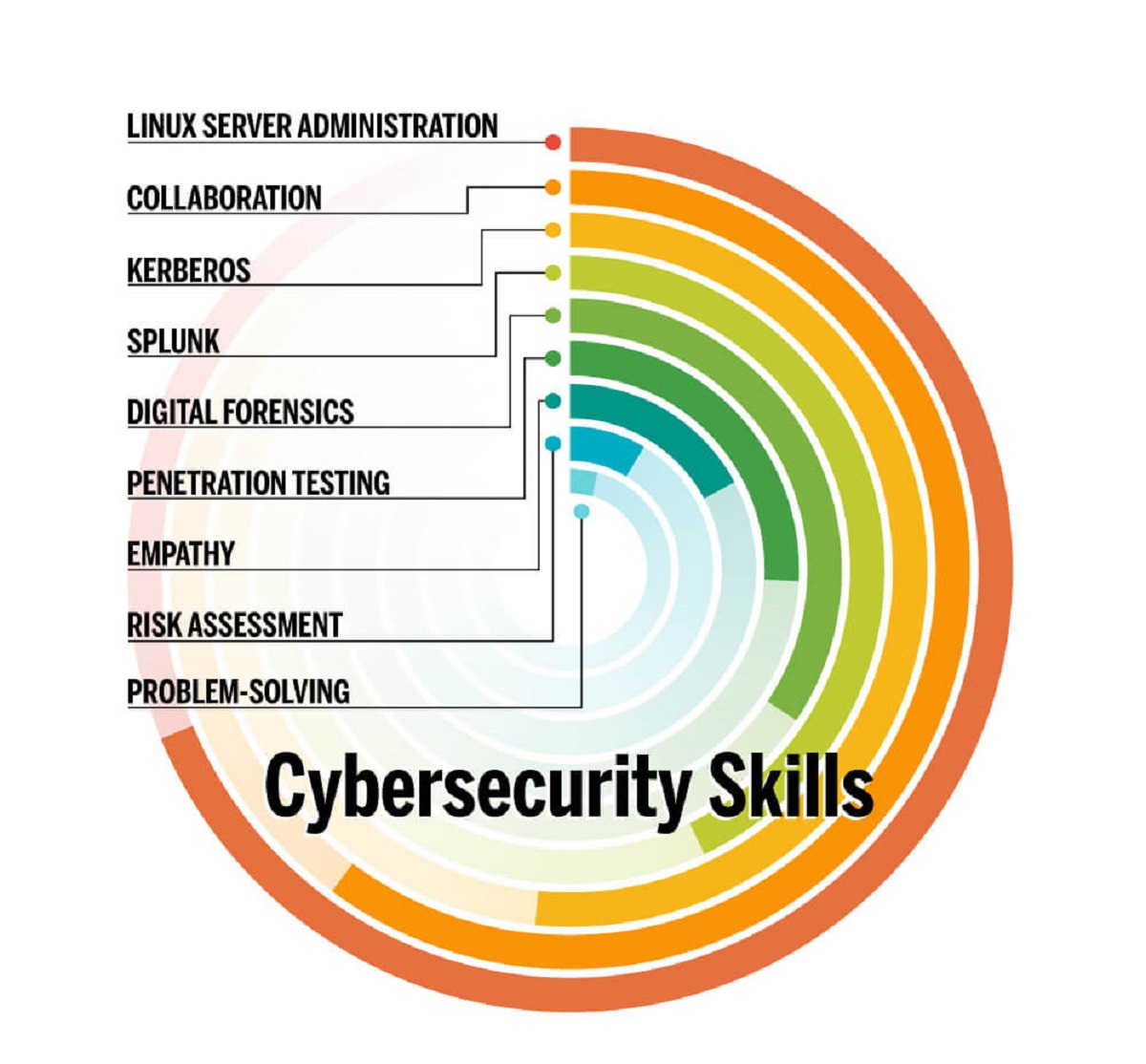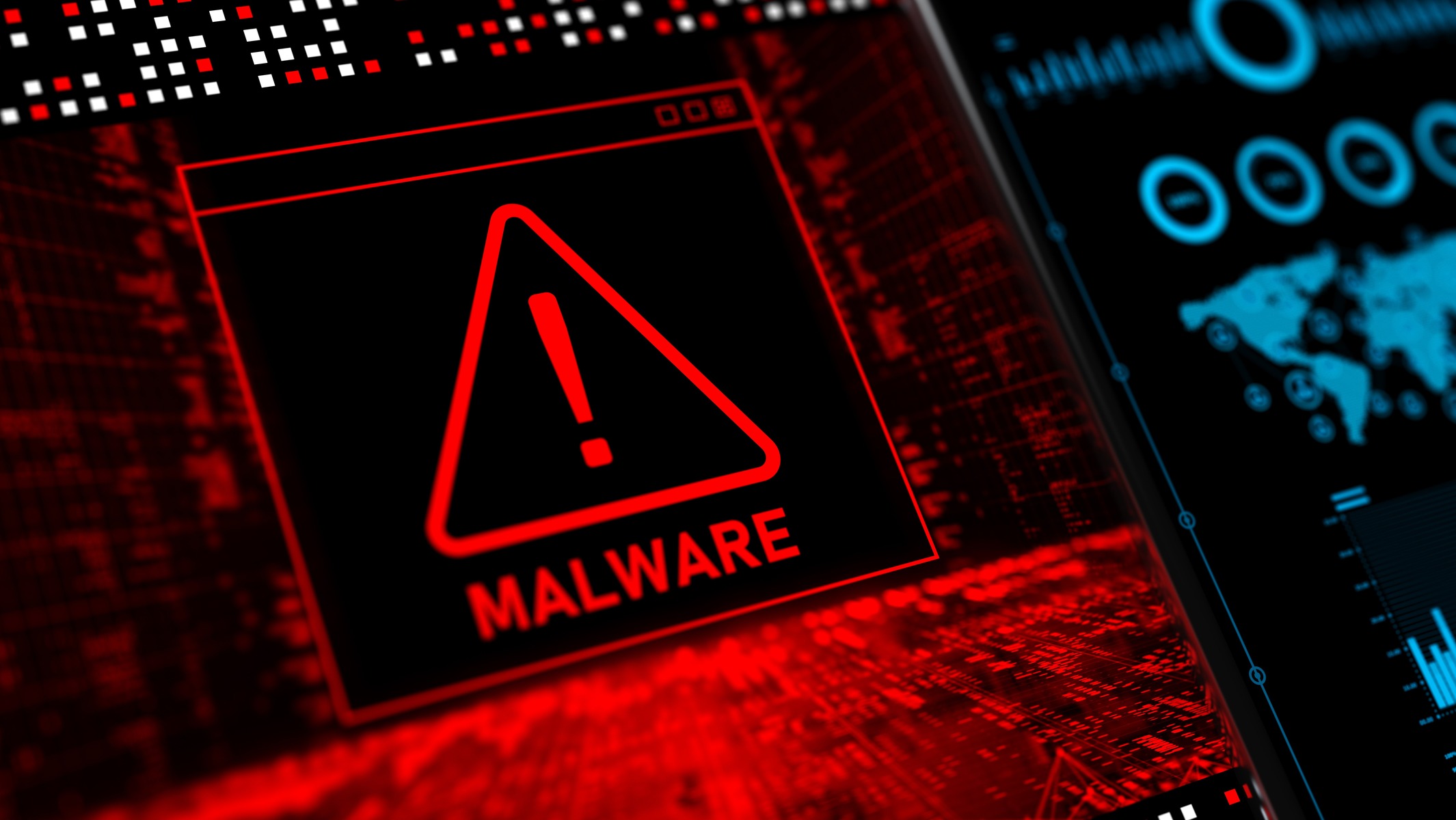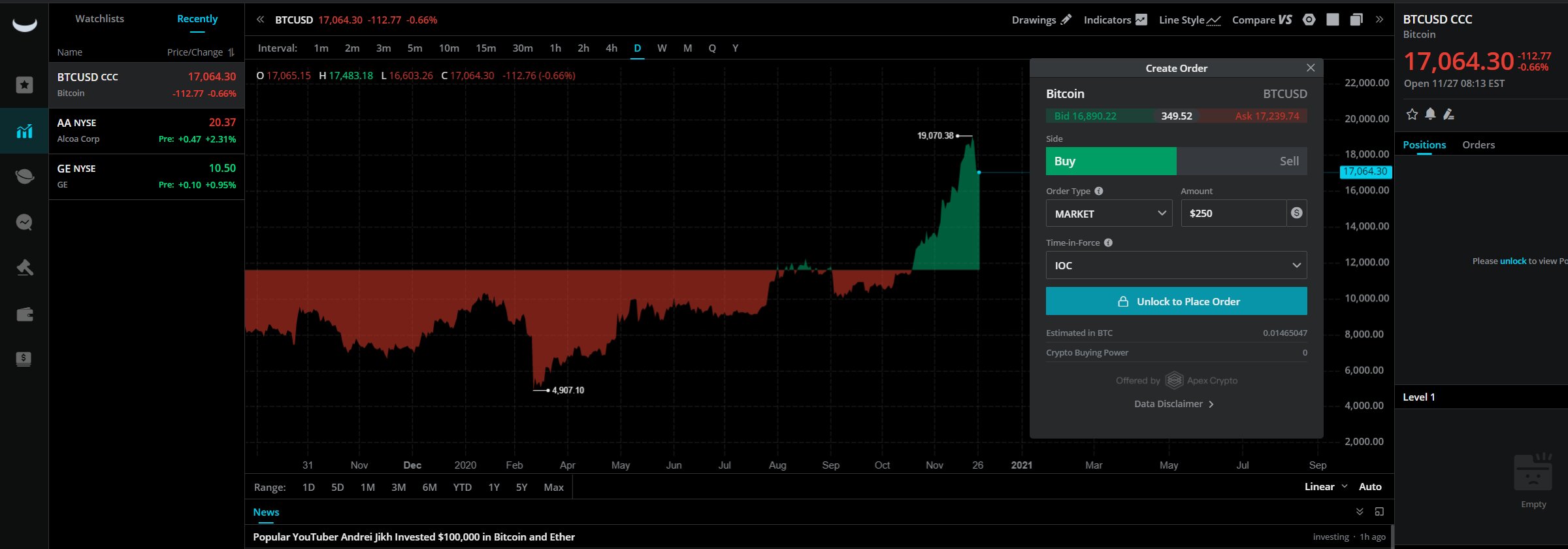Introduction
In today’s digital landscape, cybersecurity has become an essential aspect of protecting sensitive information and maintaining the integrity of any organization. As cyber threats continue to evolve and become more sophisticated, it is crucial for businesses and individuals to stay one step ahead. This is where Indicators of Compromise (IOCs) play a vital role.
IOCs are key pieces of information that serve as evidence or indicators of a security breach or compromise within a network or system. These indicators can range from specific IP addresses, malicious file hashes, suspicious URLs, to anomalous network traffic patterns. By identifying and monitoring these IOCs, organizations can detect and respond to potential cyber threats more effectively, minimizing the damage caused by successful attacks.
In this article, we will explore the essential concepts of IOCs in cybersecurity, including their types, significance, and how they are utilized in threat detection and response strategies. We will also discuss the challenges in implementing IOCs and provide best practices for utilizing them effectively within an organization.
Understanding IOCs and incorporating them into your cybersecurity practices is imperative not only for large enterprises but also for small businesses and individual users. By doing so, you can elevate your security posture, safeguard your digital assets, and protect your sensitive information from unauthorized access.
What are IOCs in Cybersecurity?
Indicators of Compromise (IOCs) are pieces of information or artifacts that provide evidence of a security breach or compromise within a computer network or system. These indicators can be derived from various sources, such as network traffic logs, system logs, antivirus alerts, intrusion detection systems, threat intelligence feeds, or even human intelligence.
IOCs serve as clues that help security professionals identify and investigate potential security incidents. They can be categorized into three main types:
- Observable IOCs: These are indicators that are directly observable in network or system logs. Examples include IP addresses, domain names, file names, registry keys, or specific patterns of network traffic.
- Behavioral IOCs: These indicators are derived from patterns or behaviors that are observed within the system. Examples include unusual file actions, abnormal network communications, or changes in user behavior.
- Analytical IOCs: These indicators are derived from analyzing the tactics, techniques, and procedures (TTPs) of known threat actors or campaigns. These can include specific malware signatures, command and control (C2) server addresses, or patterns of attack behavior.
IOCs are crucial in the detection and response to cyber threats. They act as fingerprints or traces left behind by attackers as they infiltrate or compromise a system. By collecting and analyzing IOCs, security teams can identify potential threats, assess the scope and impact of an incident, and take appropriate measures to mitigate the risks.
IOCs are used in various stages of a cybersecurity incident, including:
- Proactive Threat Intelligence: By analyzing IOCs gathered from previous incidents, threat intelligence teams can identify emerging threats, understand their tactics, and develop proactive security measures.
- Threat Detection: By continuously monitoring network and system logs for IOCs, security systems and tools can detect suspicious activities and trigger alerts when anomalous behavior is identified.
- Incident Response: IOCs play a crucial role in incident response by helping security teams investigate security incidents, identify the root cause, contain the compromise, eradicate the threat, and restore normal operations.
Overall, IOCs are a vital component of cybersecurity defense strategies. They empower organizations to proactively detect and respond to threats, reduce the dwell time of attackers, and minimize the potential damage caused by security breaches.
Types of IOCs
Indicators of Compromise (IOCs) come in various types, each providing unique insights into potential security breaches or compromises. Understanding the different types of IOCs can help security professionals better detect and respond to threats effectively. Here are the main types of IOCs:
- IP Addresses: IP addresses are fundamental indicators used in cybersecurity. They can be categorized as either source IP addresses or destination IP addresses. Unusual or suspicious IP addresses can indicate malicious activities, such as command and control connections or communication with known malicious servers.
- Domain Names: IOCs can also include domain names or URLs that are associated with malicious activity, such as phishing or malware distribution. Monitoring and blocking these domains can help prevent users from accessing malicious websites or unknowingly downloading malware.
- File Hashes: File hashes, such as MD5 or SHA-256, are unique identifiers generated based on the content of a file. Comparing file hashes against known malicious hashes can help identify files that have been compromised or are associated with known malware.
- Registry Keys: Registry keys are specific entries in the Windows Registry that contain configuration settings for the operating system or installed applications. Unusual or modified registry keys can indicate unauthorized changes or the presence of malware.
- Network Traffic Patterns: Abnormalities in network traffic patterns, such as unusual protocols, port scans, or large amounts of data sent to external destinations, can signal potential security breaches or the presence of malicious activity.
- Malicious URLs: URLs that are known to host malware or are associated with phishing campaigns can be categorized as IOCs. Blocking access to these URLs can help prevent users from falling victim to malicious websites or downloading malicious files.
- Malware Signatures: Malware signatures are specific patterns or sequences of code that can be used to identify known malware. Antivirus software and security tools leverage these signatures to detect and block malware from infecting a system.
These are just a few examples of the types of IOCs used in cybersecurity. It is important for organizations to stay up-to-date with the latest threat intelligence and continuously adapt their security systems to detect and respond to emerging IOCs.
By leveraging a combination of different types of IOCs, security professionals can gain valuable insights into potential security threats and take prompt action to protect their systems and networks.
Indicators of Compromise (IOCs)
Indicators of Compromise (IOCs) serve as critical clues that help security professionals identify and investigate potential security incidents. IOCs provide evidence of a compromise or breach within a network or system and can range from specific IP addresses and file hashes to behavioral patterns and malicious URLs.
By collecting and analyzing IOCs, security teams can detect cyber threats, assess the scope and impact of an incident, and take the necessary steps to mitigate the risks. Let’s explore some common examples of IOCs:
IP Addresses: Unusual or suspicious IP addresses, whether source or destination, can indicate malicious activities. They might signal connections to command and control servers, communication with known malicious servers, or traffic from unauthorized sources.
File Hashes: File hashes, such as MD5 or SHA-256, provide unique identifiers based on the content of a file. Comparing file hashes against known malicious hashes can help identify compromised files or those associated with known malware.
Domain Names: IOCs can include domain names or URLs that are associated with malicious activity, such as phishing or malware distribution. Identifying and blocking these domains can prevent users from accessing malicious websites or inadvertently downloading malware.
Behavioral Patterns: IOCs derived from behavioral patterns within a system can help identify potential compromises. Unusual file actions, abnormal network communications, or changes in user behavior can signal the presence of malware or unauthorized activity.
Malware Signatures: Malware signatures are specific patterns or code sequences that identify known malware. Antivirus software and security tools leverage these signatures to detect and block malware, helping to prevent infections and system compromises.
Network Traffic Patterns: Analyzing network traffic patterns can reveal anomalies such as port scans, excessive data sent to external destinations, or unusual protocols. These patterns can indicate potential security breaches or the presence of malicious activity.
These are just a few examples of IOCs commonly used in cybersecurity. It is crucial for organizations to regularly update their threat intelligence and continuously monitor and analyze IOCs to stay ahead of evolving threats.
By having a comprehensive understanding of IOCs and effectively utilizing them, security teams can strengthen their incident response capabilities, minimize the time it takes to detect and respond to threats, and protect their systems and data from unauthorized access and compromise.
IOCs and Cybersecurity Threats
IOCs play a critical role in the identification, detection, and mitigation of cybersecurity threats. By monitoring and analyzing IOCs, organizations can gain valuable insights into potential threats and take appropriate measures to protect their systems and data.
Cybersecurity threats come in various forms, including malware infections, network intrusions, phishing attacks, and data breaches. IOCs can provide valuable indicators that help security professionals identify these threats and respond effectively. Here’s how IOCs are connected to cybersecurity threats:
Malware: Malware is a major cybersecurity threat that can cause significant damage to organizations and individuals. IOCs, such as malicious file hashes or malware signatures, can be used to detect and block known malware infections. By continuously monitoring for these IOCs, organizations can identify and remove malicious software before it can cause harm.
Network Intrusions: IOCs derived from network traffic patterns or suspicious IP addresses can indicate potential network intrusions. By analyzing these IOCs, security teams can identify unauthorized access attempts or suspicious activities and respond promptly to prevent further compromise.
Phishing Attacks: Phishing attacks are a common method used by cybercriminals to trick individuals into revealing sensitive information or downloading malware. IOCs, such as malicious domain names or URLs, can be used to detect and block phishing websites and prevent users from falling victim to these attacks.
Data Breaches: IOCs can also help detect and investigate data breaches. Unusual file actions, modified registry keys, or other behavioral IOCs can indicate unauthorized access to sensitive data. By monitoring and analyzing these indicators, organizations can swiftly respond, mitigate the damage, and prevent further data exfiltration.
IOCs work in conjunction with other security measures, such as firewalls, anti-malware software, and intrusion detection systems, to enhance the overall cybersecurity posture of an organization. By identifying and responding to IOCs, organizations can minimize the impact of cyber threats and protect their critical assets.
It’s important to note that IOCs should not be the sole focus of cybersecurity efforts. Threat actors continuously evolve their tactics and techniques, making it essential for organizations to employ a multi-layered security approach that combines proactive threat intelligence, robust security infrastructure, user awareness training, and incident response planning.
By staying proactive and agile in their cybersecurity practices, organizations can effectively detect, respond to, and mitigate the vast array of threats posed by cybercriminals.
Importance of IOCs in Cybersecurity
Indicators of Compromise (IOCs) play a significant role in cybersecurity by helping organizations detect and respond to potential threats effectively. Understanding the importance of IOCs can help businesses prioritize their cybersecurity efforts and strengthen their defense against malicious activities.
Here are some key reasons why IOCs are crucial in cybersecurity:
Early Threat Detection: IOCs provide essential indicators that can help detect potential threats at an early stage. By continuously monitoring network and system logs for IOCs, organizations can identify suspicious activities, unauthorized access attempts, or other indicators of compromise. Early detection enables prompt response and containment, minimizing the impact of security incidents.
Incident Response: IOCs are vital in incident response processes. They provide tangible evidence that aids in investigating and understanding the scope of a security incident. By collecting and analyzing IOCs, security teams can determine the source of the compromise, assess the system’s vulnerability, and develop effective strategies to contain and eradicate the threat.
Threat Intelligence: IOCs contribute to threat intelligence efforts by providing valuable insights into emerging threats and known threat actors’ tactics. Analyzing and sharing IOCs across organizations and with security communities can help in identifying patterns, understanding attack techniques, and proactively defending against new and evolving threats.
Proactive Defense: By leveraging IOCs, organizations can implement proactive defense measures that enhance their security posture. These measures include blocking IP addresses associated with malicious activities, whitelisting trusted domain names, or implementing behavioral analysis techniques to identify anomalous behavior within the network. Proactive defense strategies enable organizations to prevent potential attacks before they can cause significant damage.
Faster Incident Response: IOCs expedite the incident response process by providing specific details about the compromise, enabling security teams to take immediate action. These actionable indicators enable organizations to isolate infected systems, patch vulnerabilities, and prevent further data exfiltration or system compromise.
Data Protection and Compliance: IOCs are invaluable in protecting sensitive data and ensuring compliance with industry regulations. By actively monitoring and analyzing IOCs, organizations can identify potential data breaches, promptly notify affected parties, and take appropriate measures to minimize the impact on individuals and uphold legal obligations.
Overall, the importance of IOCs in cybersecurity cannot be overstated. By implementing robust IOCs monitoring and response processes, organizations can enhance their ability to detect, respond to, and mitigate cyber threats effectively, safeguarding their critical assets and maintaining a strong security posture.
How IOCs are Used in Cybersecurity
Indicators of Compromise (IOCs) are extensively utilized in cybersecurity to enhance threat detection and response capabilities. These indicators provide valuable clues and evidence of potential security breaches or compromises within a network or system. Let’s explore how IOCs are used in cybersecurity:
Threat Detection: IOCs are used to continuously monitor network and system logs, along with other security data sources, for signs of potential threats. By comparing the observed activity against known IOCs, security systems can detect suspicious behaviors, unauthorized access attempts, or the presence of malware.
Alert Generation: When IOCs are matched against observed activities, alerts are generated to notify security teams of potential security incidents. These alerts help expedite incident response and enable security personnel to investigate the situation promptly.
Incident Investigation: IOCs provide important evidence during incident investigations. By analyzing IOCs associated with a security incident, such as malicious IP addresses or file hashes, security teams can determine the nature and scope of the compromise and identify the affected systems or data.
Threat Intelligence: IOCs are a critical component of threat intelligence. Security professionals collect IOCs from various sources, including internal incident data, open-source intelligence, and commercial threat intelligence feeds. Analyzing and sharing IOCs across organizations and security communities helps in understanding current attack trends, identifying patterns, and developing effective mitigation strategies.
Proactive Defense Measures: IOCs are used to implement proactive defense measures to prevent attacks before they can cause significant damage. By blocking known malicious IP addresses or domain names, organizations can reduce the risk of unauthorized access or data exfiltration. Applying IOCs to security systems, such as firewalls and intrusion detection systems, helps in filtering and blocking malicious traffic.
Security Information and Event Management (SIEM): SIEM platforms integrate and analyze various log sources, including those with IOCs, to identify potential security incidents. By correlating IOCs with other security event data, SIEM systems can prioritize and present security alerts in real-time, enabling faster detection and response.
Sharing and Collaboration: Sharing IOCs with trusted partners, industry groups, and government agencies promotes collaborative defense against cyber threats. Through initiatives such as ISACs (Information Sharing and Analysis Centers) and threat intelligence sharing platforms, organizations can contribute IOCs and benefit from collective knowledge in detecting and defending against emerging threats.
By leveraging IOCs, organizations can proactively detect potential threats, expedite incident response, and implement strong defense measures. Incorporating IOCs into cybersecurity practices enhances threat detection capabilities, minimizes the impact of security incidents, and strengthens overall cyber resilience.
Implementing IOCs in Your Organization
Implementing Indicators of Compromise (IOCs) in your organization is a crucial step towards enhancing your cybersecurity defenses. By effectively incorporating IOCs into your security practices, you can better detect and respond to potential threats. Here are some key considerations for implementing IOCs:
1. Define Your Threat Profile: Start by understanding the specific threats that your organization is most vulnerable to. Identify the types of attacks that commonly target organizations in your industry and geographical region. This knowledge will help you determine relevant IOCs to monitor and configure your security systems accordingly.
2. Identify Reliable Information Sources: Establish relationships with trusted threat intelligence providers, participate in threat sharing communities, and leverage open-source intelligence. Reliable sources can provide updated IOCs associated with known threats, attack campaigns, or threat actor behaviors. Regularly monitor and incorporate these sources into your threat intelligence feed.
3. Leverage Security Tools: Implement security tools or platforms that can effectively collect, analyze, and act upon IOCs. This includes using SIEM (Security Information and Event Management) systems, advanced malware detection, network intrusion detection systems, and antivirus software that can cross-reference observed activities with known IOCs to generate alerts and initiate automated responses.
4. Customize IOCs for Your Environment: Tailor the IOCs to your specific environment, considering your systems, applications, and network infrastructure. Fine-tune the IOCs to match the specific behaviors and patterns that would indicate a compromise within your organization. This customization ensures that your detection methods are optimized for your unique ecosystem.
5. Implement Automated Threat Hunting and Incident Response: Leverage automated threat hunting capabilities to continuously search for IOCs across your systems, proactively identifying potential threats. Establish incident response playbooks that include steps for investigating and responding to alerts triggered by IOCs. Automate response actions such as isolating infected systems or blocking suspicious traffic based on identified IOCs.
6. Stay Updated: IOCs lose effectiveness over time as attackers evolve their tactics. Regularly update and refresh your IOCs with the latest threat intelligence. Keep track of emerging threats, new attack techniques, and insights shared by the cybersecurity community. Adjust your IOCs and security measures to align with the evolving threat landscape.
7. Promote a Culture of Cybersecurity Awareness: Educate your employees about the importance of IOCs and their role in identifying and mitigating cyber threats. Train them to be vigilant for potential phishing attacks, suspicious emails, or unusual system behaviors that could indicate a compromise. Encourage reporting of potential security incidents based on observed IOCs.
8. Collaborate with External Partners: Share and receive IOCs with trusted partners, industry groups, or government organizations. Participate in threat intelligence sharing platforms and industry-specific Information Sharing and Analysis Centers (ISACs). Collaborative efforts improve the collective defense against cyber threats and increase the rate of IOCs identification and response.
By effectively implementing IOCs in your organization, you can significantly enhance your cybersecurity readiness, improve threat detection capabilities, and respond swiftly to potential security incidents. Staying proactive, continuously updating your IOCs, and fostering a culture of cybersecurity awareness are key to maintaining a robust defense against evolving threats.
Challenges in Implementing IOCs
While implementing Indicators of Compromise (IOCs) is crucial for effective cybersecurity, there are several challenges that organizations may encounter. Understanding and addressing these challenges is essential to ensure the successful implementation and utilization of IOCs. Here are some common challenges:
1. Lack of Comprehensive Threat Intelligence: Acquiring comprehensive and up-to-date threat intelligence can be challenging for organizations. Collecting IOCs from reliable sources and correlating them with internal security logs can be time-consuming and resource-intensive. Limited access to quality threat intelligence may result in missed or delayed identification of emerging threats.
2. Overwhelming Volume of IOCs: As the threat landscape continues to evolve, the volume of IOCs can become overwhelming. Organizations may struggle to efficiently manage and filter through a large number of indicators. Without an effective system or process to prioritize and validate IOCs, security teams may experience alert fatigue and overlook critical threats.
3. Contextualizing IOCs: IOCs often need to be contextualized and tailored to an organization’s specific environment. Generic or broad IOCs may trigger false positives or miss relevant indicators, making it harder to detect actual threats. Organizations must invest time in understanding their unique systems and processes to contextualize IOCs effectively.
4. Evolving Tactics of Threat Actors: Cybercriminals consistently adapt their tactics to evade detection. They frequently change their tools, infrastructure, or attack vectors, rendering previously identified IOCs less effective. Organizations must stay updated on threat intelligence and continually adjust their IOCs to align with evolving attack techniques.
5. Lack of Automation and Integration: The manual collection and analysis of IOCs can be time-consuming and prone to errors. Organizations may struggle to automate the ingestion, correlation, and analysis of IOCs across different security systems. Integrating IOCs into existing security infrastructure and implementing automated workflows can help streamline the process.
6. Resource Limitations: Implementing and managing IOCs requires dedicated resources, including skilled personnel and technology investments. Smaller organizations with limited budgets and personnel may face challenges in effectively implementing and maintaining an IOC-driven security strategy. Collaboration with external partners and leveraging managed security services can help alleviate resource constraints.
7. Privacy and Legal Considerations: Implementing IOCs involves collecting and analyzing security data, which may raise privacy and legal concerns. Organizations must ensure compliance with applicable privacy regulations and implement appropriate data protection measures. Balancing the need for security with privacy considerations is crucial in the implementation of IOCs.
8. False Positives and False Negatives: IOCs can lead to both false positives (false alarms) and false negatives (missed detections). False positives can waste valuable time and resources on investigating non-threatening events, while false negatives can result in undetected security breaches. Organizations need to fine-tune their systems to reduce false positives and implement additional detection mechanisms to mitigate false negatives.
Addressing these challenges requires a proactive and adaptive approach. Overcoming these obstacles through effective threat intelligence management, automation, contextualization, and resource allocation will enhance the overall effectiveness of implementing IOCs and contribute to a more robust cybersecurity defense.
Best Practices for Using IOCs in Cybersecurity
Effectively utilizing Indicators of Compromise (IOCs) is vital for maximizing the effectiveness of your cybersecurity efforts. By following best practices, you can enhance your threat detection capabilities and improve incident response. Here are some key best practices for using IOCs in cybersecurity:
1. Consolidate Threat Intelligence: Establish relationships with trusted threat intelligence providers and consolidate multiple sources of IOCs. This includes commercial feeds, open-source intelligence, and threat information shared within industry-specific communities. Aggregating IOCs from diverse sources ensures comprehensive coverage and early detection of emerging threats.
2. Prioritize IOCs: Develop a system to prioritize IOCs based on their relevance and potential impact to your organization. Focus on indicators that align with your threat landscape, taking into account past incidents, industry trends, and known risk factors. Prioritization enables efficient allocation of resources and effective response to the most critical threats.
3. Automate IOC Integration: Implement automation to efficiently integrate IOCs into your security infrastructure. Leverage technologies such as threat intelligence platforms and security orchestration, automation, and response (SOAR) tools. This ensures that IOCs are automatically ingested, correlated, and cross-referenced with security event data to generate real-time alerts and initiate automated response actions.
4. Contextualize IOCs: Customize IOCs to your organization’s specific environment and technological landscape. Tailor generic IOCs by considering your network architecture, system configurations, and application stack. This contextualization ensures more accurate detection and reduces false positives.
5. Regularly Update and Validate IOCs: IOCs have a limited shelf life as threat actors constantly evolve their tactics. Regularly update your IOCs based on the latest threat intelligence and analyze their effectiveness in detecting real threats. Validate IOCs against security events and conduct periodic assessments to refine and optimize their performance.
6. Foster Information Sharing: Share IOCs and collaborate with trusted partners, industry groups, and government agencies. Participate in threat intelligence sharing platforms and industry-specific Information Sharing and Analysis Centers (ISACs). Sharing IOCs enriches the collective knowledge and enhances the community’s ability to quickly detect and respond to emerging threats.
7. Train Employees on IOC Awareness: Educate your employees about IOCs and train them to recognize potential indicators of compromise. By fostering a culture of cybersecurity awareness, employees become an additional line of defense, helping to identify and report suspicious activities or events that may warrant investigation based on IOCs.
8. Continuously Improve Incident Response: Leverage IOCs to refine and enhance your incident response processes. Conduct post-incident reviews to identify gaps and areas for improvement in detecting, containing, and eradicating threats. Incorporate lessons learned from previous incidents into your incident response plans and update IOC-based detection and response strategies accordingly.
By following these best practices, organizations can strengthen their cybersecurity posture, optimize threat detection and response capabilities, and effectively mitigate the risks posed by cyber threats.
Conclusion
Indicators of Compromise (IOCs) are essential tools in the field of cybersecurity, enabling organizations to proactively detect, respond to, and mitigate potential threats. By understanding and effectively utilizing IOCs, organizations can enhance their overall security posture, protect sensitive data, and prevent costly security breaches.
Throughout this article, we have explored the significance of IOCs in cybersecurity. We discussed the various types of IOCs, including IP addresses, file hashes, domain names, and network traffic patterns. These IOCs serve as key indicators that help security professionals identify potential security breaches or compromises within their network or system.
IOCs are instrumental in threat detection, incident response, and proactive defense measures. They provide critical insights into emerging threats, support the investigation of security incidents, and enable organizations to automate response actions. These indicators empower security teams with the ability to detect and respond to potential cyber threats swiftly.
However, there are challenges in the implementation of IOCs, such as managing overwhelming volumes of IOCs, addressing evolving tactics of threat actors, and effectively integrating IOCs into existing security infrastructure. Overcoming these challenges requires a proactive and adaptive approach, encompassing comprehensive threat intelligence, automation, contextualization, and adequate resource allocation.
By implementing best practices for using IOCs, organizations can maximize the effectiveness of their cybersecurity defenses. This includes consolidating threat intelligence, prioritizing IOCs based on relevance, automating IOC integration, regularly updating and validating IOCs, fostering information sharing, training employees on IOC awareness, and continuously improving incident response processes.
In closing, incorporating IOCs into cybersecurity strategies is essential for organizations of all sizes and industries. By leveraging these indicators, organizations can strengthen their security posture, detect threats in a timely manner, respond effectively to incidents, and mitigate the risks posed by cyberattacks. By staying proactive, adaptive, and collaborative, organizations can better protect their systems, data, and reputation in an ever-evolving threat landscape.







